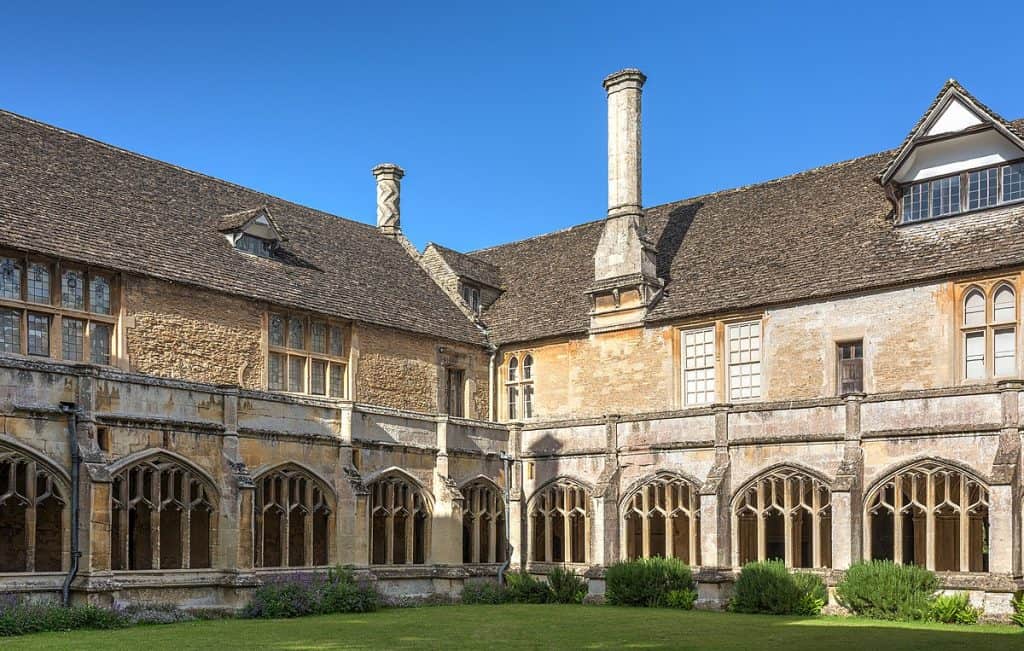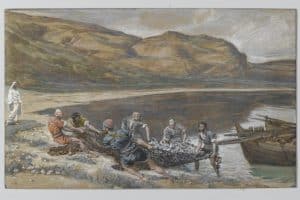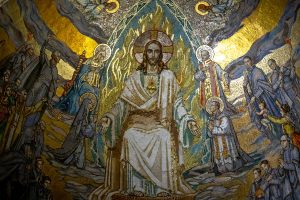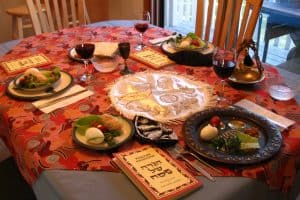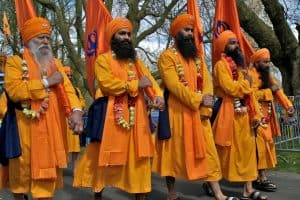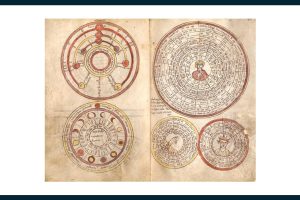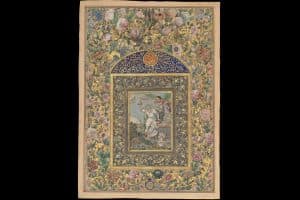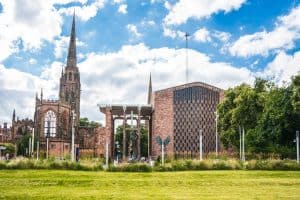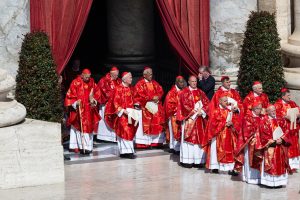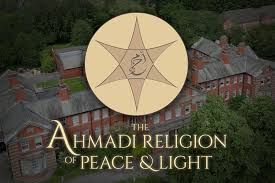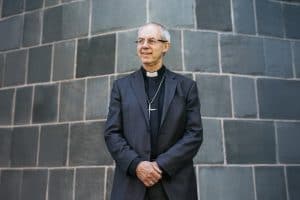By Maddy Fry
The monastic tradition in Britain stretches back to 400AD and is kept alive today with religious communities continuing to observe the core principles of poverty, chastity and obedience. Most monks and nuns here belong to Catholic and Anglican religious orders, with Orthodox, Buddhist and Hindu orders also represented throughout these islands. However their numbers are declining. In this factsheet, we review the statistics, look into beliefs and practices and discover the continuing appeal of the tradition.
How many monastic communities are there in Britain?
The most recent ministry statistics from the Church of England, recorded in 2019, show there to be 34 “recognised religious communities” in Britain, with 60 houses containing 280 members, alongside 16 “acknowledged” religious communities.
The Catholic Record Society has little recent data for religious communities in England and Wales, but in 2010 said there were 1,053 convents in England and Wales. In Scotland, the society provides more recent statistics, showing 311 sisters in religious orders in 2021 and 39 brothers in religious orders. There were 90 all-women religious houses in Scotland in 2021 and 38 for men.
According to the online directory Orthodox World, there are seven Orthodox monasteries across Britain, containing at least 11 monks and nuns.
Research by Leeds University states that data for numbers of Buddhist monks and nuns in Britain has not been collected systematically, but there are likely to be about 500 nuns connected to several groups. There are likely to be more monks. The research highlights that, according to Historic England there are 90 Buddhist buildings that accommodate monastics, although other monks and nuns live in private houses.
Similarly, formal statistics for numbers of Hindu monks and nuns are thin on the ground, although the presence of more than 200 registered temples, according to the National Council for Hindu Temples, suggests that space for Hindu monastics exists in Britain.
No Jain or Taoist monastic communities are recorded in Britain.
Where are they?
Both Anglican and Roman Catholic monastic communities are widely spread across the UK. Some of the most notable include Ampleforth Abbey in Yorkshire, Worth Abbey in West Sussex and Mucknell Abbey in Worcestershire.
Orthodox monasteries are similarly spread out, including the monastery of Saints Ninian and Cuthbert in the Scottish Highlands and the St Edward Brotherhood Monastery in Surrey.
Buddhist temples, including those that provide space for practising monastics, can be found in London, Birmingham and Yorkshire, as highlighted by Historic England.
Hindu temples can be found across Britain including the BAPS Shri Swaminarayan Mandir, commonly known as the Neasden temple, in northwest London, and the Lakshmi Narayan Hindu temple in Bradford.
Beliefs and practices
On entering religious life, Christian monks and nuns take vows that contain three core elements: poverty, chastity and obedience. In practice this means accepting a life without significant material comforts, with most of each individual’s financial needs being met by a community fund; abstention from romantic and sexual relationships, and a family life; and a willingness to go wherever they are sent by their order so their talents may serve the community best.
Buddhist monastics embrace similar values, which are generally based on the Five Precepts — a commitment not to steal, kill, speak falsely, take intoxicating substances or practise sexual misconduct. Their goal is to undermine the three principle sources of suffering and rebirth — greed, aversion and ignorance — by shaving their heads, wearing distinctive robes, studying and spreading Buddhist beliefs and meditating.
In practice, this means that a candidate for religious life must undergo a period where they live alongside their chosen community before spending years as a “novice”, a status or term that varies between communities and faiths, but which is essentially an apprenticeship period. After that, they have the choice of leaving the community or making a formal commitment to a religious life. If they stay, they undertake normal day-to-day duties such as cooking, cleaning and gardening as well as reading and socialising, but with prayer and meditation as the central focus. Catholic or Anglican nuns can be required to attend seven services a day alongside personal prayer time.
How do they differ between faiths?
Buddhist monks and nuns are not always required to make the lifelong commitment that their Christian counterparts do. Buddhist monks or nuns first spend time living in the monastic community to learn about its ways. In Thailand, for example, they can return to lay life after a few years if they choose. However, if part of the Tibetan school, they must make a commitment for life, studying the teachings of the Buddha and sharing them with others.
How do they differ within faiths?
Each Christian monastic order will have slightly differing principles depending on the motivations of their founder, even if their day-to-day activities stay the same. In enclosed monastic orders in Christianity, the nuns tend to stay in the convent and devote themselves solely to prayer, while those living in apostolic orders tend to go out and work in the community.
There is little difference between Catholic and Anglican nuns and monks in terms of practice, with their days focused around prayer and serving the community. Anglican nuns are sometimes ordained and do not need a male leader to take services.
Roman Catholic nuns can have a more restricted existence. Unlike Catholic monks, they are not ordained, and according to Sister Michaela Toulmin at the Hyning convent in Lancashire, “Though they might follow a similar monastic timetable, monks are more likely to leave their monasteries for holidays, retreat giving, family events. Even in the same type of order, for example, Benedictine and Cistercian, women are more likely to be enclosed, travel less, live more simple lives.”
Sr Dr Gemma Simmonds of the Congregation of Jesus in Cambridge added: “There are historical reasons behind the differences. Women used to have to be enclosed if they weren’t married because there were fears about them being ‘loose.’ There is the need to protect the role also of silence and of the inner world, and monks do have that to some degree, but with less social history behind it.”
The Order of St Francis emphasises working alongside those who are marginalised in society to emulate the life of St Francis of Assisi, who chose a life that rejected what he saw as the greed and materialism of the world. As a result, Franciscans place great emphasis on sharing the Gospel message with people from all backgrounds, regardless of wealth or status, and on the need to value and protect the natural world. Franciscan nuns include the Poor Clares, for whom fasting and silence are large parts of their daily routines due to their belief in simplicity in contemplation.
The Benedictine order emphasises the founding rules of monasticism via the Benedictine Rule, which demands that monks and nuns live a life centred on one community in one place (rather than travelling around), focusing their energies on understanding scripture and prioritising the needs of the community over individual desires..
Jesuits — members of the Society of Jesus — are noted for their emphasis on educational and mission work, taking an extra vow to be sent at will to wherever they may be most needed, as well as to “seek God and find God’s will in all things”, leading them to study within a wide range of areas. Jesuits can be found across the world and have worked as scientists, missionaries, teachers and writers. More controversially, they have a reputation for sometimes conflicting with the views of more mainstream Catholics.
Carmelite monks and nuns are drawn from a tradition that strongly venerates the Virgin Mary and the Old Testament prophet Elijah. While early Carmelite communities spent isolated lives in the desert, the order today places great emphasis on being active in the community via pastoral and charitable work, particularly teaching, preaching and caring for the sick and the vulnerable.
By contrast, Cistercians live a far less public existence. They are cloistered most of the time within the walls of the monastery or convent, living a quiet and reclusive existence revolving around prayer, hard work and simple living.
Buddhist monks and nuns have to follow rules laid down by the Vinaya, the regulatory code for those following the monastic path. Only three Vinaya monastic lineages remain: Theravada (Sri Lanka & Southeast Asia), Mulasarvastivada (Tibetan Buddhism and the Himalayan region) and Dharmaguptaka (East Asian Buddhism)
Traditions vary in terms of their practices, but in general men follow the 227 rules required for them as bhikkhu (monks) while women, known as bhikkhuni, follow 311. They not only lay out codes of practice for how to live but provide recommended disciplinary procedures for monastics who break the rules.
Why do people join?
A sense of feeling “called” is common to all those who accept a vocation to a religious life. This tends to mean feeling that the best way to live a life fully devoted to a religion’s teachings is to live within a community setting, where the needs of the community come first and an individual gives up individual, more “worldly” desires, whether material or sexual. Others can feel that they want a life that is not about competition, material wealth and status, and more about working with others for the greater good. Some women also wish to embrace a life outside patriarchal expectations around the need to be married to a man and make motherhood a cornerstone of their existence.
Dress codes
Forms of dress in Christian monastic orders can vary, with some orders allowing their members to wear normal but modest clothing. However, the forms of traditional dress worn by nuns can include a girdle, veil, rosary, tunic, medal, sandals and a coif (a cap worn under a veil). Monks will tend to wear a tunic covered by a scapular (a garment hanging from the shoulders) and a loose hood known as a cowl.
Buddhist monks and nuns tend to shave their heads to show their devotion to their new way of life and their disavowal of worldly desires, and wear distinctive robes that can vary according to tradition but are seen in the colours of orange or saffron.
Finances
Buddhism is relatively new to Britain and unlike Christian monastics, Buddhists are often required to support themselves beyond their basic needs as the resources of many monasteries are limited.
Christian centres of monasticism tend to have more established sources of funds, often from the churches they belong to, but these can be limited. Many orders supplement their incomes by running farms and selling agricultural produce, brewing beer, running retreat centres and managing gift shops. Any profits from these businesses can be donated to local charities once costs for the monastery or convent’s upkeep have been deducted. Monks and nuns with pensions will often see their resources go into a community pot which is then used to provide stipends to each member.
Secular presence
As well as running businesses, Christian monastics have a visible presence in many non-monastic spaces, notably schools and hospitals. In England there are 2,090 Catholic schools and 85 in Wales, with nuns and monks teaching in several of them. Private Catholic schools such as Worth Abbey, Ampleforth, Stonyhurst and Downside have traditionally seen monks play an active role in teaching and the running of each school.
Monks and nuns also have a long history of providing services for the sick. Today they are active in hospital chaplaincy work, providing comfort and support to the sick and the dying. Buddhists provide a similar service in the form of the Buddhist Healthcare Chaplaincy Trust.
Sister Gemma Simmonds, a theologian at St Edmund’s College, Cambridge, says she had been “a university chaplain, a prison chaplain, a school teacher, a missionary, an academic writing books, and a radio broadcaster”, adding: “I have never been bored once in 50 years.”
In popular culture
Despite the varied lives of monks and nuns, Sr Gemma has further highlighted how nuns are often portrayed in TV and film as either “‘nuns on the run’, prancing through the hills, or psychopaths”: Sister Act, The Sound of Music and The Magdalene Sisters.
Yet recently there have been some nuanced portrayals, such as in the film Doubt, the BBC series Call the Midwife and the character of Sr Michael in the TV comedy Derry Girls. These tend to portray women who have taken the veil as having questions, dilemmas, interests and everyday problems the same way as people outside of religious life. As Sr Michaela Toulmin put it: “People are surprised that we are just like them, with all our imperfections and faults, who have just chosen a different way of life. I love rock music and heavy metal, and it’s always a surprise to people who assume I must like a certain type of music!”
Controversies
Accusations of abuse, particularly the sexual abuse of children, have been widespread in both the Roman Catholic and Anglican churches in Britain. Between 1970 and 2015, there were 1,023 accusations of abuse made against Catholic religious orders in England and Wales. In the Anglican Church, 390 people in “positions of trust” in the Church of England were convicted of sexual offences against children between the 1940s and 2018.
Fr Robert Stretton from the Society of the Sacred Mission highlighted how the “terrible scandals in the church about the sexual abuse of children is all true”, and that “it’s damaged a lot of people’s respect for religious figures and institutions”.
Decline and rebirth
In the UK the decline in numbers of people entering the religious life has been close to terminal. In 2000 there were 710 nuns and 230 monks in Anglican religious orders, which dropped by a third by 2008. On the Catholic side, monks and nuns numbered into the thousands but numbers of new members were dropping. In 2007 only 13 men and 16 women entered religious life.
The reasons for this are varied. The abuse scandals mentioned above have played a role but religious observance in Britain has dropped hugely in the past few decades. Sr Gemma said: “The idea of sending at least one child into the religious orders has died out, and women have more choice in terms of education and careers, meaning most don’t have to enter the convent to get an education.”
Many convents and monasteries no longer take novices. However, in 2014 the number of Catholic nuns taking their vows increased to 45, compared with the 15 in 2004. While it doesn’t reverse the overall picture of decline, it shows the religious life still holds appeal for some.
Further information
Church of England Data Services
The National Council for Hindu Temples

